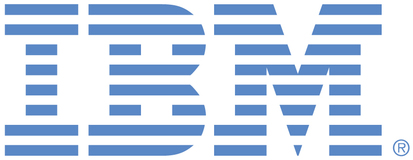
This portal is to open public enhancement requests for IBM Sterling products and services. To view all of your ideas submitted to IBM, create and manage groups of Ideas, or create an idea explicitly set to be either visible by all (public) or visible only to you and IBM (private), use the IBM Unified Ideas Portal (https://ideas.ibm.com).
Shape the future of IBM!
We invite you to shape the future of IBM, including product roadmaps, by submitting ideas that matter to you the most. Here's how it works:
Search existing ideas
Start by searching and reviewing ideas and requests to enhance a product or service. Take a look at ideas others have posted, and add a comment, vote, or subscribe to updates on them if they matter to you. If you can't find what you are looking for,
Post your ideas
Post an idea.
Get feedback from the IBM team and other customers to refine your idea.
Follow the idea through the IBM Ideas process.
Specific links you will want to bookmark for future use
Welcome to the IBM Ideas Portal (https://www.ibm.com/ideas) - Use this site to find out additional information and details about the IBM Ideas process and statuses.
IBM Unified Ideas Portal (https://ideas.ibm.com) - Use this site to view all of your ideas, create new ideas for any IBM product, or search for ideas across all of IBM.
ideasibm@us.ibm.com - Use this email to suggest enhancements to the Ideas process or request help from IBM for submitting your Ideas.

Hello Ananth.
Unfortunately the team is not able to proceed forward with this request since this is a depreciated feature in RTAM enabled using yfs.yfs.balanceShortageAcrossNodes=Y and yfs.yfs.considerUnassignedDemands=Y. That being said, there is a suggested option (see below) in v9.5 and above. It is recommended to move to the new feature to balance unassigned demands across DG.
Feature in 9.5 and above : Distribution of unassigned demand based on priority for DG's.
The new behavior while reducing the availability across DG does not change availability at Nodes so the issue logged in does not happen with new balancing behavior.
In that case availability at nodes is not impacted and issue will not be observed. Only DG having priority gets unassigned demand and not other DG gets it.
New feature does not support reducing unassigned availability from multiple DG(S) or DG with common Node.
Good thing is customer use case is achievable with a small customization which can make unassigned demand to be considered for all DG(s) configured based on their requirement.
While storing the alert for DG with new feature, a column in YFS_INVENTORY_ALERTS i.e. "UNASSIGNED_ONHAND_QUANTITY" , "UNASSIGNED_FUTURE_QUANTITY" for DG alert configured in priority.
The same values can be shown in each generated alert xml wherever applicable if REALTIME_ATP_MONITOR.REALTIME_AVAILABILITY_CHANGE_LIST.xml is extended to have attributes: UnassignedFutureQuantity="" UnassignedOnhandQuantity="" in element AvailabilityChange.
so event XML will be something as below: ( If you want to see alerts xml, you will have to extend alert xml as well )
<AvailabilityChange AgentCriteriaId="" AlertLevel="2" AlertQuantity="10.00"
AlertRaisedOn="2020-07-31T03:02:59-04:00" AlertType="REALTIME_ONHAND" FirstFutureAvailableDate="2500-01-01" FutureAvailableDate="2500-01-01"
FutureAvailableQuantity="0.00" IsDefaultDistributionGroup="N" MonitorOption="3" Node="" DistributionRuleId="RTAM_DG" OnhandAvailableDate="2020-07-31" OnhandAvailableQuantity="5.00"
UnassignedFutureQuantity="0.00" UnassignedOnhandQuantity="10.00"/>
This will start showing unassigned onhand and future quantity for DG(s) configured in priority. Only drawback is if activity is created only for a Node which is not common between DG in that RTAM run, alert may not be created for DG which is not set for priority.
Customer while publishing event to external system ( or wherever required ) can actually reduce the unassigned quantity to DG(s) not set in unassigned priority based on unassigned quantity of DG set for unassigned demand.
If DG(s) which is not set in priority only comes in current AVAILABILITY_CHANGE_LIST EVENT; then you can query alert table for item, DG and get quantity from there and reduce for this alert quantity.